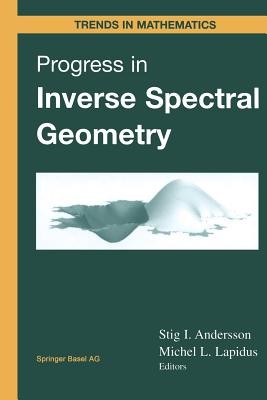
- We will send in 10–14 business days.
- Author: Stig I Andersson
- Publisher: Birkhäuser
- Year: 2012
- Pages: 197
- ISBN-10: 3034898355
- ISBN-13: 9783034898355
- Format: 15.6 x 23.4 x 1.1 cm, minkšti viršeliai
- Language: English
- SAVE -10% with code: EXTRA
Reviews
Description
most polynomial growth on every half-space Re (z)::::: c. Moreover, Op(t) depends holomorphically on t for Re t > O. General references for much of the material on the derivation of spectral functions, asymptotic expansions and analytic properties of spectral functions are [A-P-S] and [Sh], especially Chapter 2. To study the spectral functions and their relation to the geometry and topology of X, one could, for example, take the natural associated parabolic problem as a starting point. That is, consider the 'heat equation': (%t + p) u(x, t) = 0 { u(x, O) = Uo(x), tP which is solved by means of the (heat) semi group V(t) = e-; namely, u(-, t) = V(t)uoU- Assuming that V(t) is of trace class (which is guaranteed, for instance, if P has a positive principal symbol), it has a Schwartz kernel K E COO(X x X x Rt, E* (R)E), locally given by 00 K(x, y; t) = L>-IAk( k (R) 'Pk)(X, y), k=O for a complete set of orthonormal eigensections 'Pk E COO(E). Taking the trace, we then obtain: 00 tA Op(t) = trace(V(t)) = 2:: >- k. k=O Now, using, e. g., the Dunford calculus formula (where C is a suitable curve around a(P)) as a starting point and the standard for- malism of pseudodifferential operators, one easily derives asymptotic expansions for the spectral functions, in this case for Op.
EXTRA 10 % discount with code: EXTRA
The promotion ends in 23d.23:13:56
The discount code is valid when purchasing from 10 €. Discounts do not stack.
- Author: Stig I Andersson
- Publisher: Birkhäuser
- Year: 2012
- Pages: 197
- ISBN-10: 3034898355
- ISBN-13: 9783034898355
- Format: 15.6 x 23.4 x 1.1 cm, minkšti viršeliai
- Language: English English
most polynomial growth on every half-space Re (z)::::: c. Moreover, Op(t) depends holomorphically on t for Re t > O. General references for much of the material on the derivation of spectral functions, asymptotic expansions and analytic properties of spectral functions are [A-P-S] and [Sh], especially Chapter 2. To study the spectral functions and their relation to the geometry and topology of X, one could, for example, take the natural associated parabolic problem as a starting point. That is, consider the 'heat equation': (%t + p) u(x, t) = 0 { u(x, O) = Uo(x), tP which is solved by means of the (heat) semi group V(t) = e-; namely, u(-, t) = V(t)uoU- Assuming that V(t) is of trace class (which is guaranteed, for instance, if P has a positive principal symbol), it has a Schwartz kernel K E COO(X x X x Rt, E* (R)E), locally given by 00 K(x, y; t) = L>-IAk( k (R) 'Pk)(X, y), k=O for a complete set of orthonormal eigensections 'Pk E COO(E). Taking the trace, we then obtain: 00 tA Op(t) = trace(V(t)) = 2:: >- k. k=O Now, using, e. g., the Dunford calculus formula (where C is a suitable curve around a(P)) as a starting point and the standard for- malism of pseudodifferential operators, one easily derives asymptotic expansions for the spectral functions, in this case for Op.


Reviews